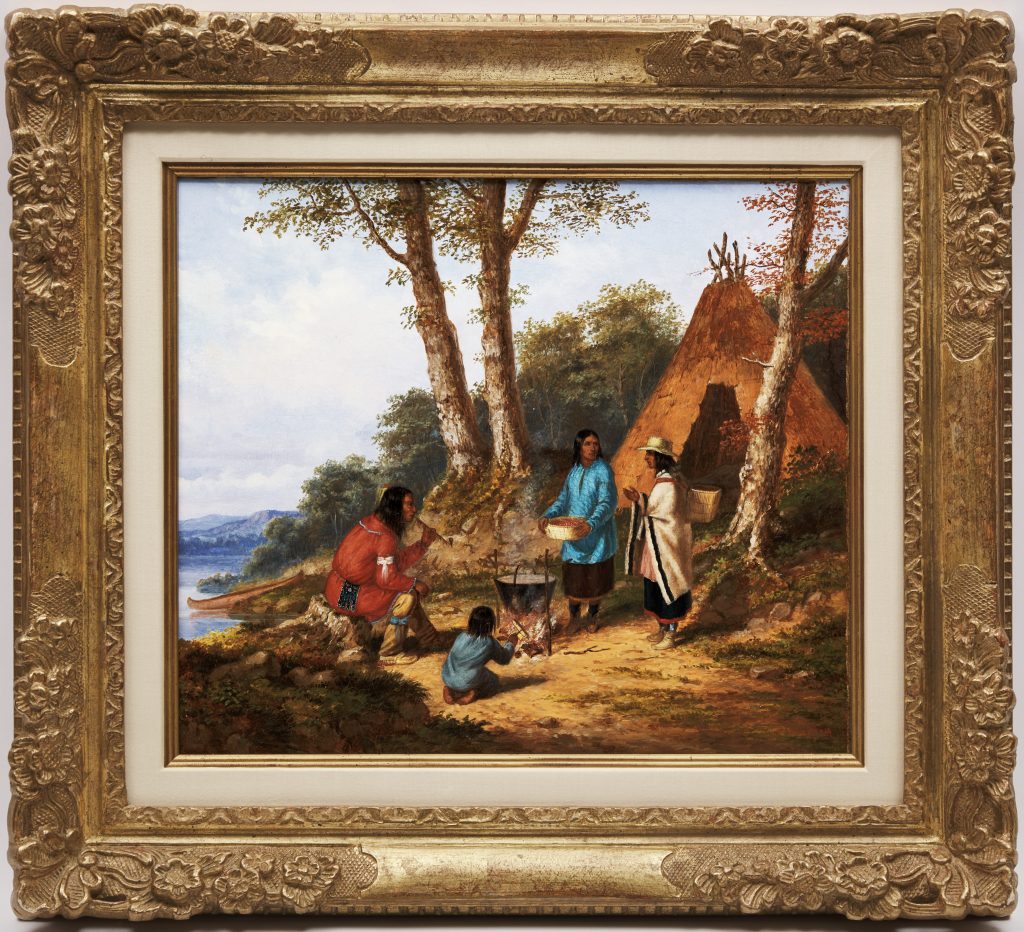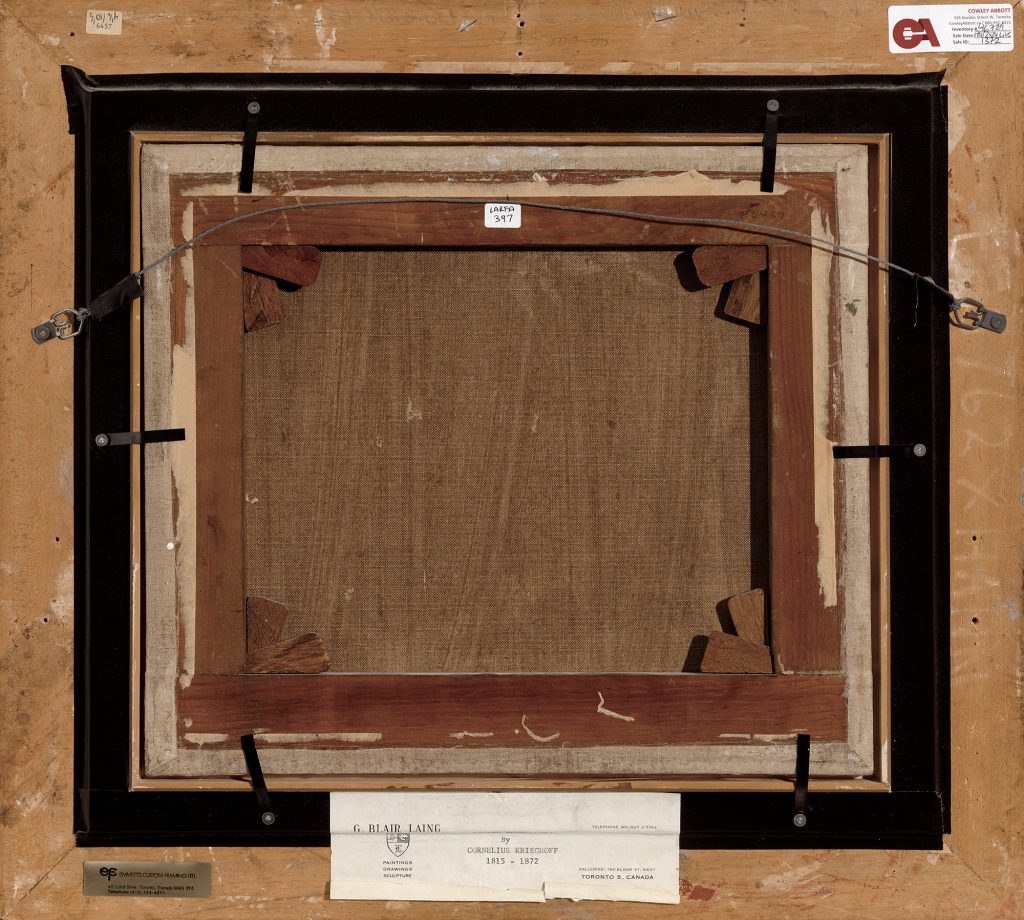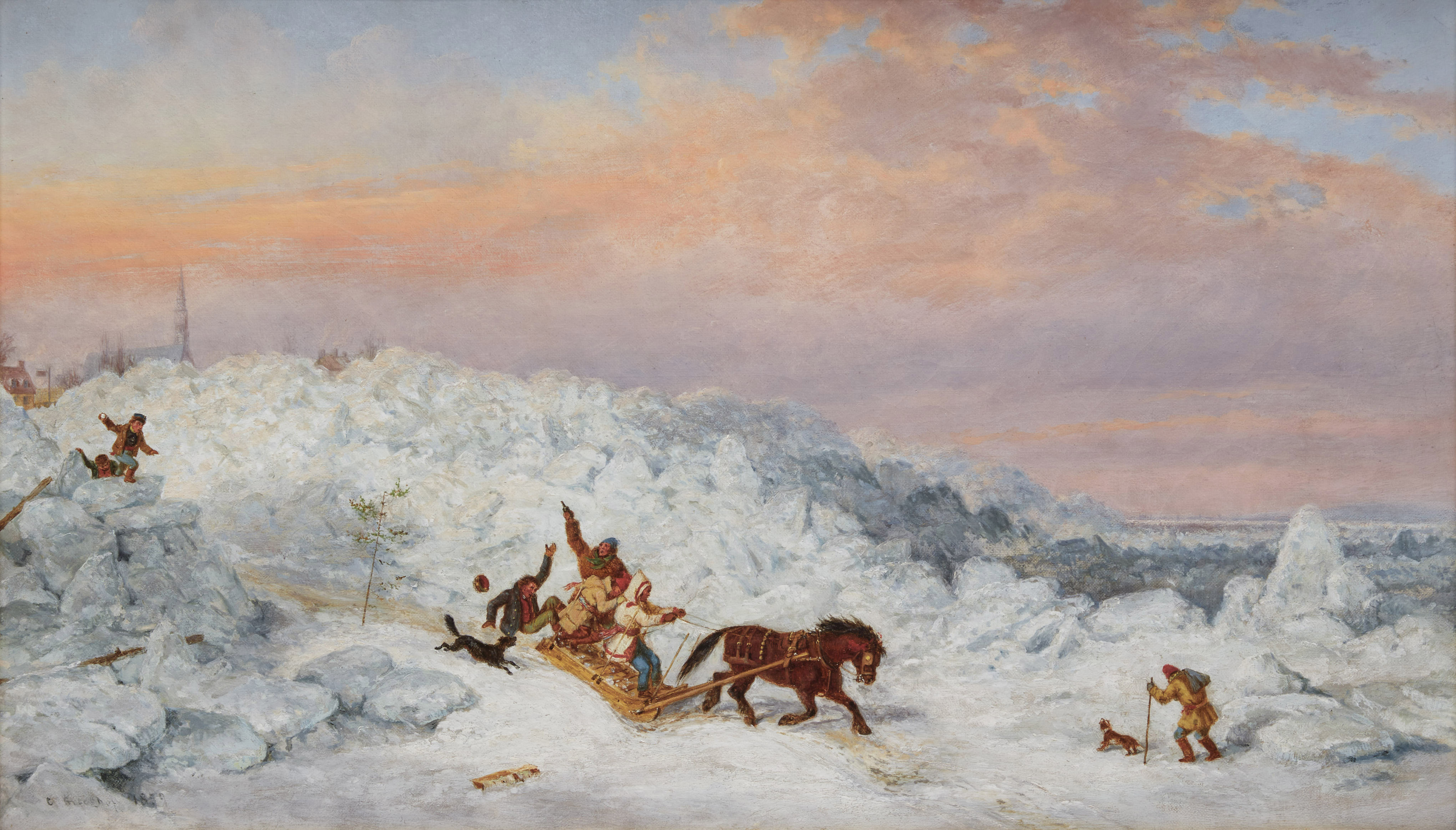Provenance:
G. Blair Laing Galleries, Toronto
Kaspar Gallery, Toronto
Private Collection, Toronto
By descent to the present Private Collection, Toronto
Literature:
J. Russell Harper, “Krieghoff”, Toronto, 1979, page 44
Dennis Reid, “Krieghoff, Images of Canada”, Toronto, 1999, pages 58-61.
Cornelius Krieghoff is renowned for his depictions of Canada’s Indigenous peoples, which form a significant portion of his diverse body of work. Approximately one-third of his known paintings focus on Indigenous subjects. As noted by J. Russell Harper, Krieghoff portrayed Indigenous figures as “unspoiled by the complexities of artificial and unnatural civilization.” After settling in Montreal in 1846, he frequently painted the people of Caughnawaga, a reserve just south of the city. His work included large canvases for wealthy patrons as well as smaller ones for those of modest means. In 1853, he travelled to Quebec, revisiting this favoured subject in his works across the region, including at the Lorette Reserve.
Although Canada was undergoing significant constitutional changes, industrialization, and urbanization during this time, Krieghoff’s paintings rarely reflected these transformations. Instead, he focused on rural life, portraying both French-speaking habitants and Indigenous peoples with a sense of humour and admiration. According to Dennis Reid, Krieghoff’s German heritage likely fostered a deep respect for those who maintained a close connection to nature and resisted the pressures of “civilization”.
Reid also remarks that Krieghoff’s most ambitious depictions of Indigenous life from his Montreal period show family gatherings around a fire during the summer, akin to traditional Canadian interior scenes. Though only a few pieces are dated, this series likely spans from around 1848 to 1850. These compositions emphasize the bond of the Indigenous people to the land, with a focused study made to the arrangement of figures and their dress, as well as detailed observations of plant life.






